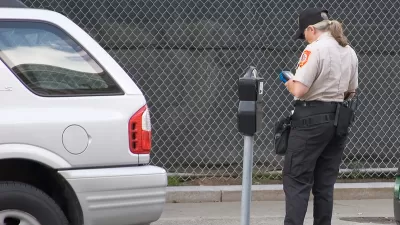Important distinctions about the difference between a comprehensive plan and zoning code changes, as well as details of the form-based influences of the new Denveright 2040 plan are reported here.

Andrew Kenney writes: "The Denver City Council last week approved a plan that will guide the city through a new urban era in the next two decades. But what happens right now?"
"It’s going to be subtle at first, but over the next few years it will set city leaders up for some big decisions," according to Kenney.
The Denveright plan enacts "long-term citywide strategies" and "specific expectations for every single acre of the city," explains Kenney, which don't necessarily mean every neighborhood is going to instantaneously change. "But if a developer needs the City Council to approve a rezoning for a tall new building, it might be able to use the plan as justification, depending on the location," reports Kenney. Still, the plan doesn't change expectations for most neighborhoods in the city, according to Kenney.
The article also includes more details about the form-based elements employed by the code, such as the use of "contexts" for describing the general feel of areas, as decided by the Denveright plan.
Importantly, Kenney's coverage also notes the need to implement zoning changes in neighborhoods targeted for change in the Denveright plan.
FULL STORY: Denver has a plan for 2040, but what happens today?

Planetizen Federal Action Tracker
A weekly monitor of how Trump’s orders and actions are impacting planners and planning in America.

Congressman Proposes Bill to Rename DC Metro “Trump Train”
The Make Autorail Great Again Act would withhold federal funding to the system until the Washington Metropolitan Area Transit Authority (WMATA), rebrands as the Washington Metropolitan Authority for Greater Access (WMAGA).

DARTSpace Platform Streamlines Dallas TOD Application Process
The Dallas transit agency hopes a shorter permitting timeline will boost transit-oriented development around rail stations.

Renters Now Outnumber Homeowners in Over 200 US Suburbs
High housing costs in city centers and the new-found flexibility offered by remote work are pushing more renters to suburban areas.

The Tiny, Adorable $7,000 Car Turning Japan Onto EVs
The single seat Mibot charges from a regular plug as quickly as an iPad, and is about half the price of an average EV.

Supreme Court Ruling in Pipeline Case Guts Federal Environmental Law
The decision limits the scope of a federal law that mandates extensive environmental impact reviews of energy, infrastructure, and transportation projects.
Urban Design for Planners 1: Software Tools
This six-course series explores essential urban design concepts using open source software and equips planners with the tools they need to participate fully in the urban design process.
Planning for Universal Design
Learn the tools for implementing Universal Design in planning regulations.
Municipality of Princeton
Roanoke Valley-Alleghany Regional Commission
City of Mt Shasta
City of Camden Redevelopment Agency
City of Astoria
Transportation Research & Education Center (TREC) at Portland State University
US High Speed Rail Association
City of Camden Redevelopment Agency
Municipality of Princeton (NJ)





























